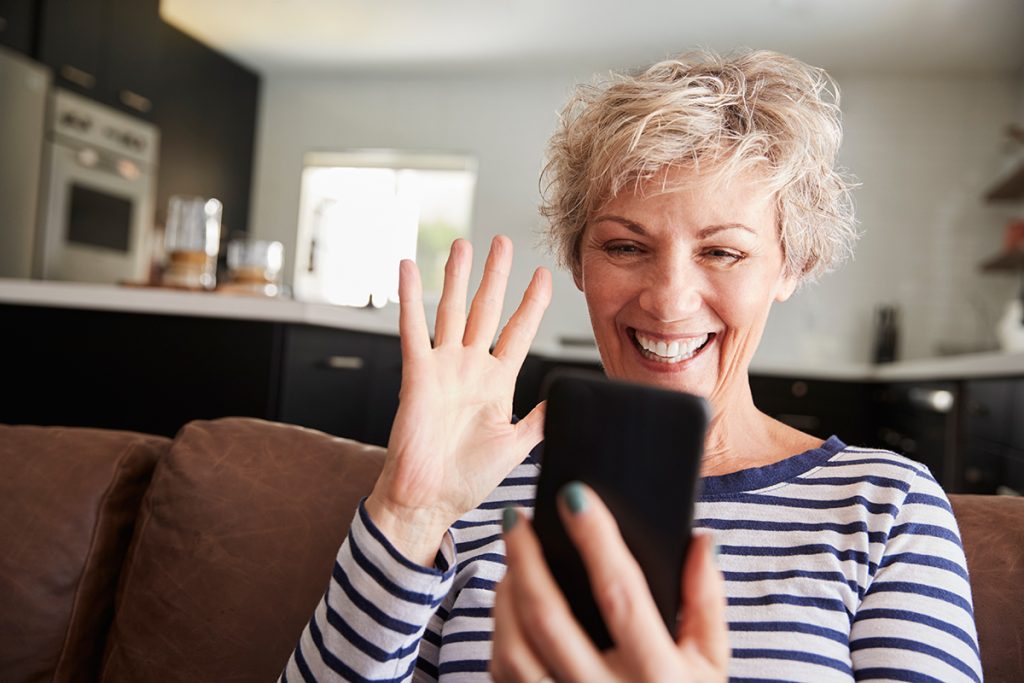We all still need each other. Even in the age of COVID-19, our health continues to depend upon healthy supportive relationships. Our coach training company, Real Balance 1 has always stressed what we call Coaching for Connectedness. We‘ve seen lifestyle improvement occur and last more often when people receive support for the changes they are making to live healthier lives. When a coaching client sets up an action step we ask “Who/what else can help support you in this?”. Research on what makes health behavior last points primarily to two factors: a shift in self-concept and community support. (2) It’s also a well-established fact that people who are more socially isolated have significantly higher rates of all major chronic illnesses. (3)
 Our challenge in the midst of a pandemic situation is how we distance from each other while remaining connected to each other. Yes, follow the CDC guidelines for social distancing. We can still greet each other with elbow bumps, and then go for a walk, a bike ride, a cruise in kayaks, etc., and continue to avoid the proximity that puts us at any risk. We can connect via phone and receive the nourishment of live, interactive conversation that texting and e-mail don’t quite match. We can climb on board a web-based platform such as Zoom and Skype where we are face-to-face for our conversation. We also have all sorts of apps such as Facetime, WeChat, and many more that allow us to have face-to-face interaction for live conversations.
Our challenge in the midst of a pandemic situation is how we distance from each other while remaining connected to each other. Yes, follow the CDC guidelines for social distancing. We can still greet each other with elbow bumps, and then go for a walk, a bike ride, a cruise in kayaks, etc., and continue to avoid the proximity that puts us at any risk. We can connect via phone and receive the nourishment of live, interactive conversation that texting and e-mail don’t quite match. We can climb on board a web-based platform such as Zoom and Skype where we are face-to-face for our conversation. We also have all sorts of apps such as Facetime, WeChat, and many more that allow us to have face-to-face interaction for live conversations.
As coaches we can continue to work remotely with our clients, as the majority of coaching is already done. As we do, explore the feelings that the changes brought about by social distancing are bringing out in your clients. Empathize. Explore. When people talk about their fears, the intensity of those fears almost always lessens. As people become less afraid, their thinking improves. They aren’t so quick to jump into dismissive all-or-none thinking. They are then able to engage in strategic thinking with their coach to find unique solutions to staying healthy.
- The fitness center is shut down. How can you shift to working out at home? Use stretch bands. Modify a spare room into a place to do Yoga, floor exercises, etc. Spring brings better weather allowing more cardio outdoors.
- Do more outdoor exercise/activity with other people – just keep your proper distance.
- Encourage clients to find new ways to electronically visit their friends, grandchildren, and others. Play online games together.
- Check in with your clients to make sure they have CDC information/WHO information about how to stay safe during the COVID-19 pandemic. (5,6)
Take heart at how people are showing concern for each other during this time. Younger people who are at somewhat less risk are engaging in social distancing, handwashing, etc. not only for themselves, but for the older and more vulnerable people who could be affected by the contact they are having. People in neighborhood chatlines are volunteering to go pick up groceries and prescriptions for older or more sickly neighbors. Hopefully what will come out of all of this is a greater sense of how we are all in this together. Distancing does not mean isolating. The truism of wellness pioneer Jack Travis is still valid: Connection is the Currency of Wellness.
Be well and stay well!
Michael Arloski, Ph.D., PCC, NBW-HWC – A psychologist with over twenty-five years of clinical work, and more than 23 years as a professional wellness coach, Dr. Arloski is one of the key developers of the field of health & wellness coaching. He is the author of Wellness Coaching For Lasting Lifestyle Change, 2nd Ed., and Masterful Health & Wellness Coaching: Deepening Your Craft. His company, Real Balance Global Wellness Services, Inc., has trained over 9,000 health & wellness coaches worldwide www.realbalance.com.
References
- https://realbalance.com
- https://www.ncbi.nlm.nih.gov/pmc/articles/PMC3753403/
- https://www.apa.org/monitor/2019/05/ce-corner-isolation
- https://www.cdc.gov/coronavirus/2019-ncov/index.html
- https://www.who.int/emergencies/diseases/novel-coronavirus-2019/advice-for-public
This article was published on Dr. Arloski’s blog. Reprinted with permission.
